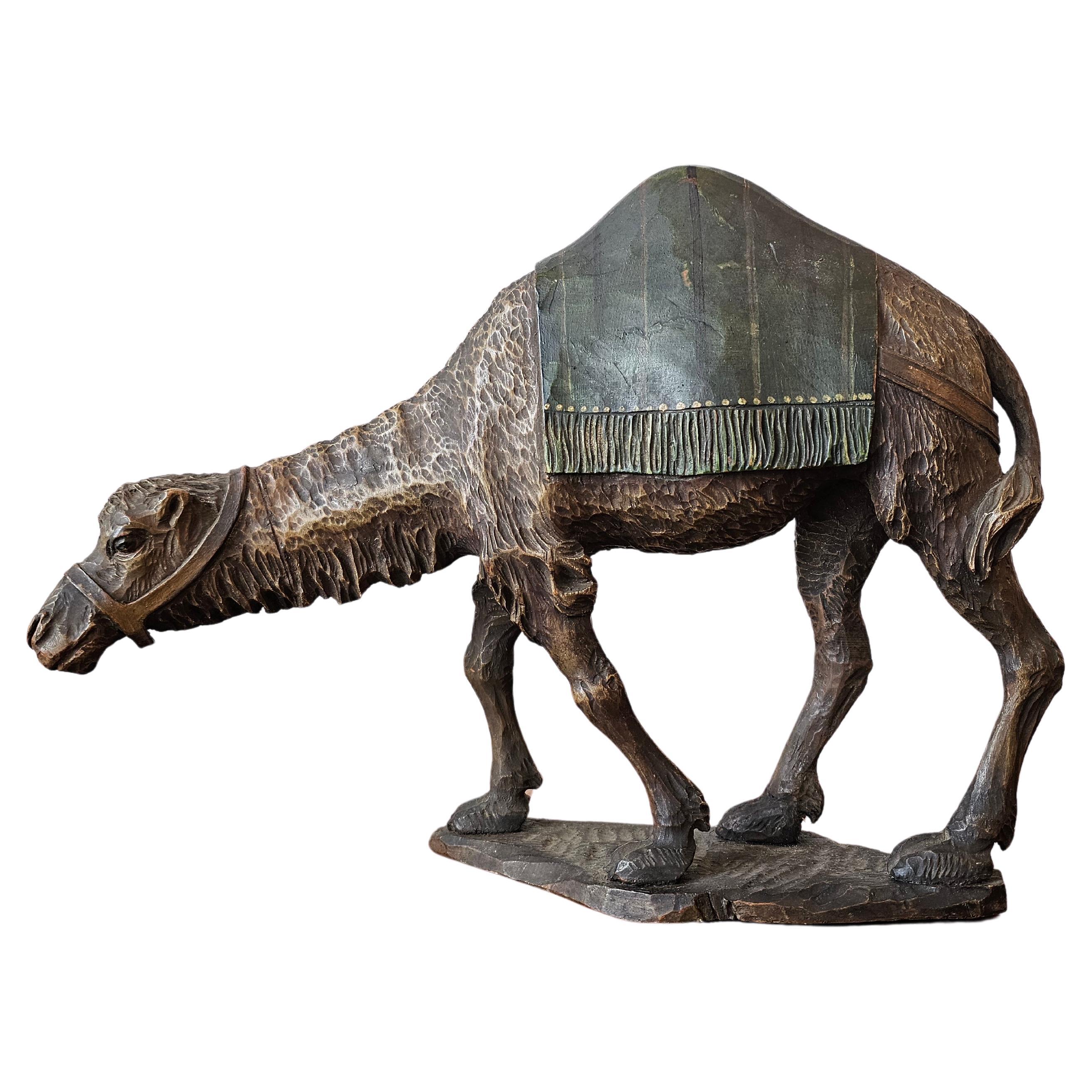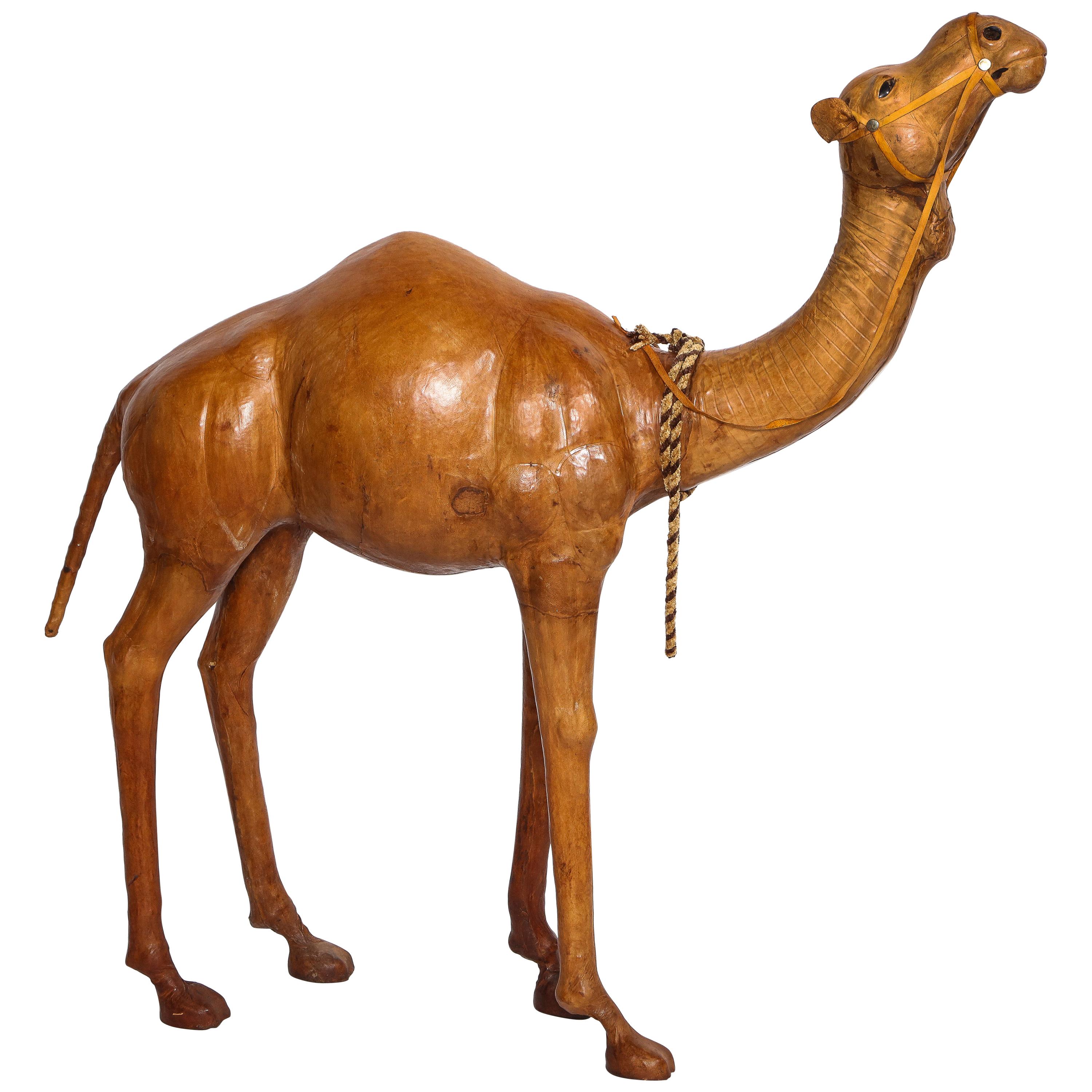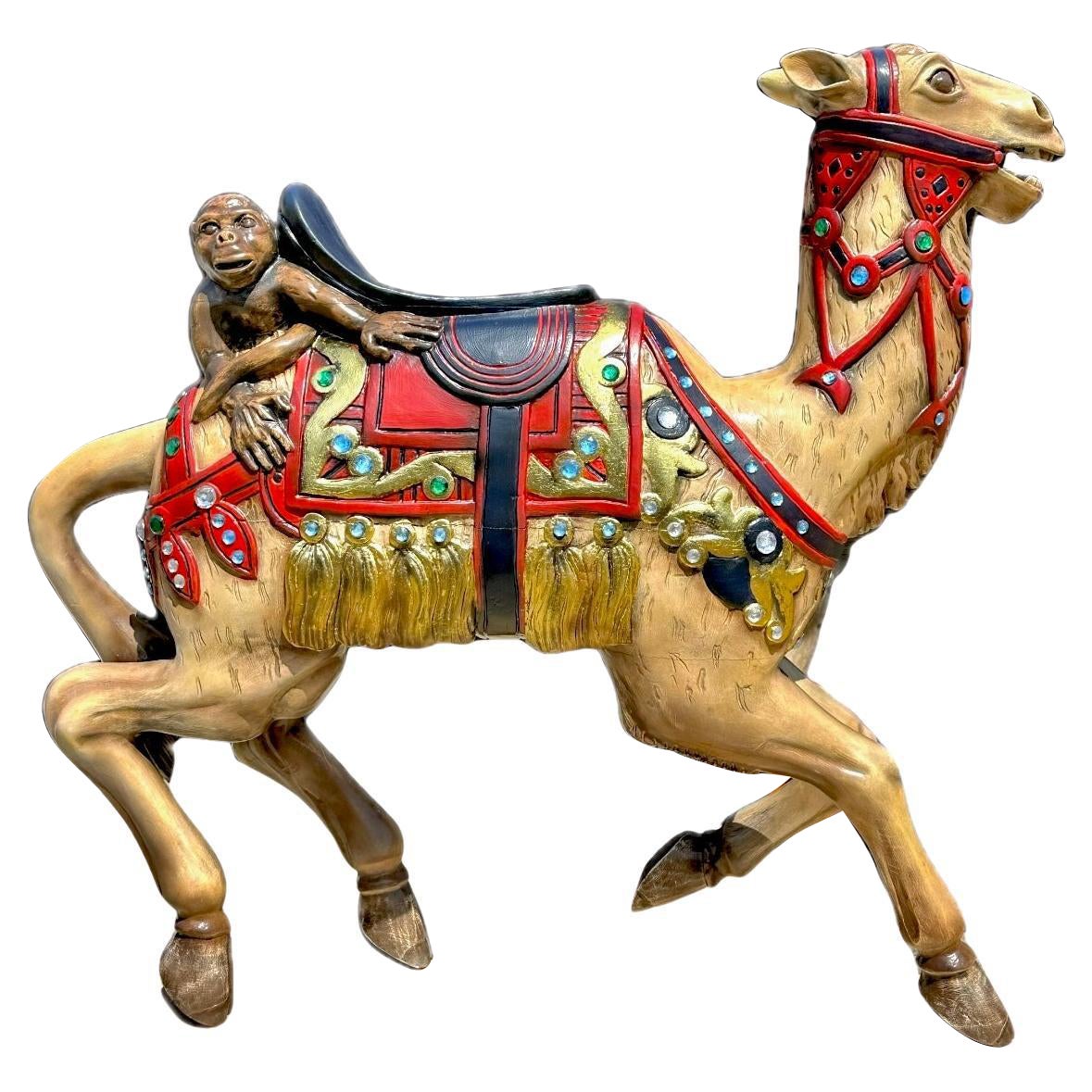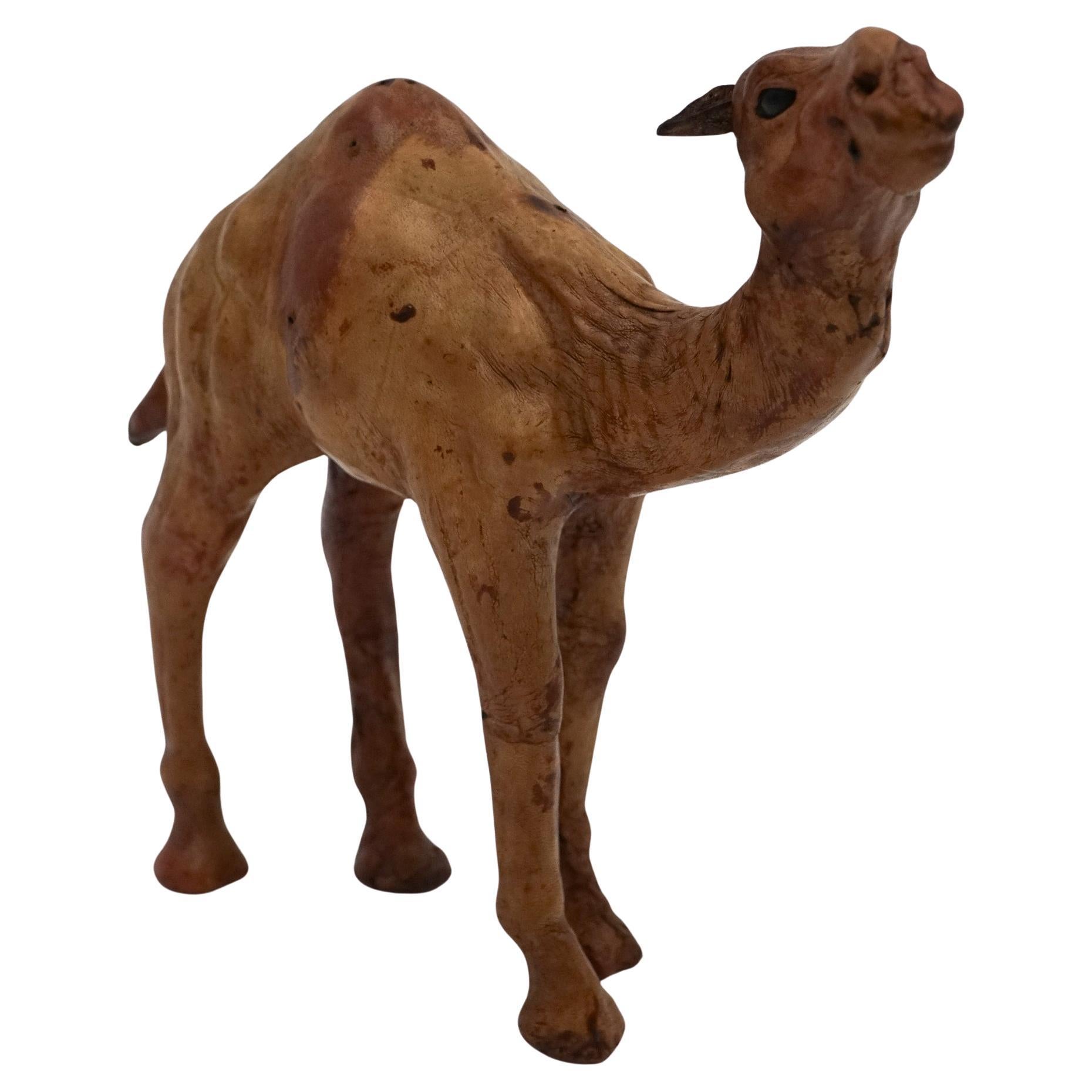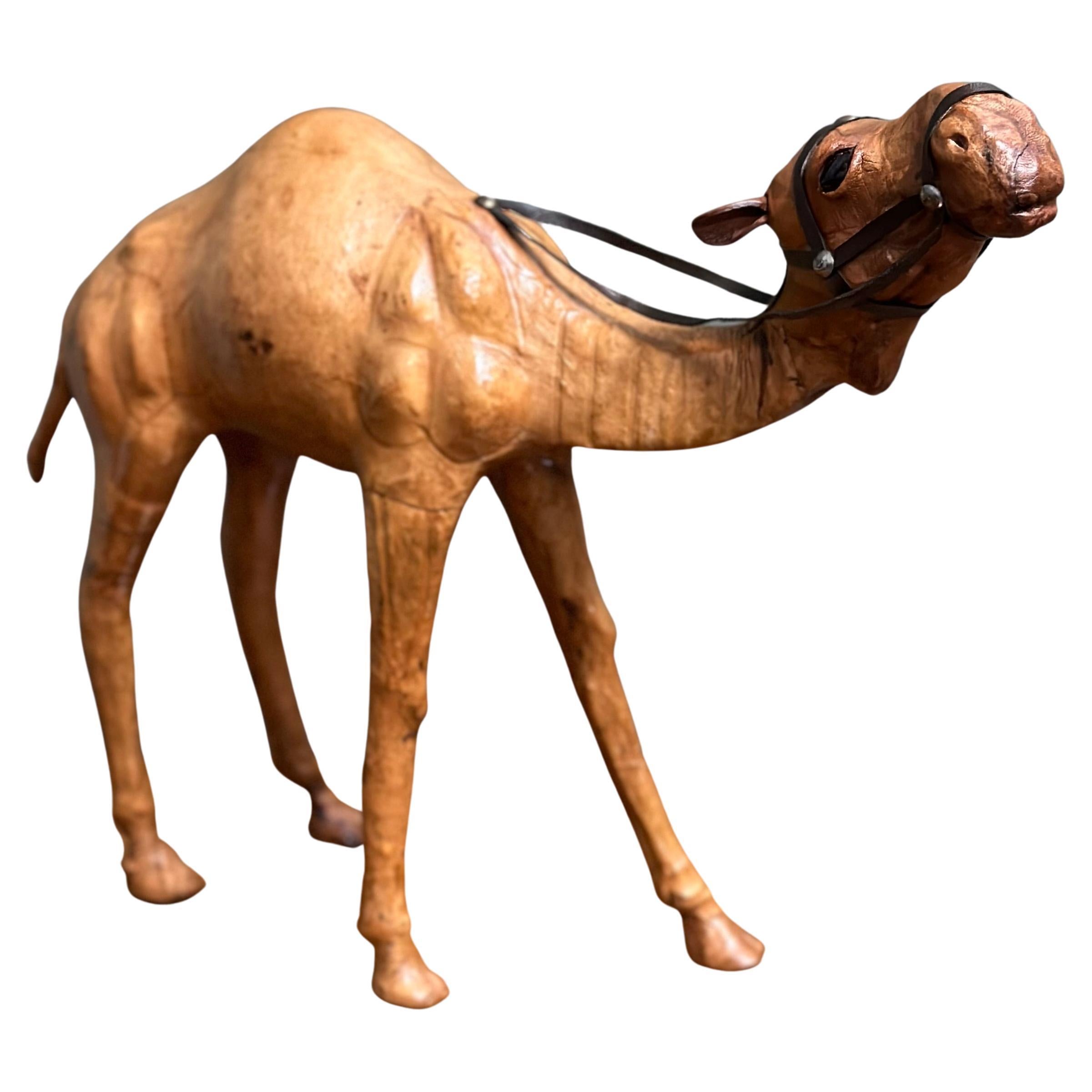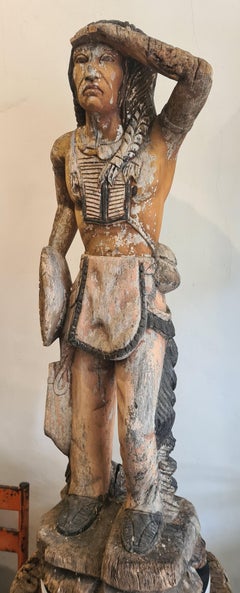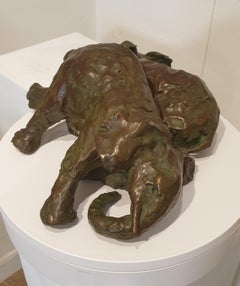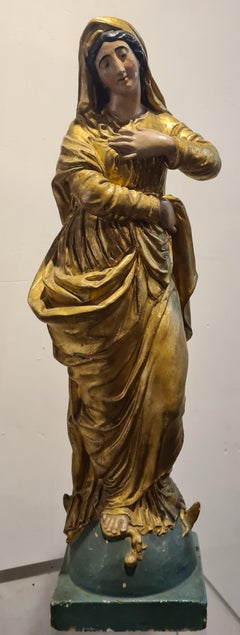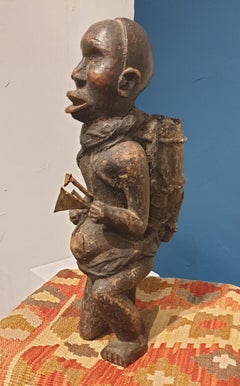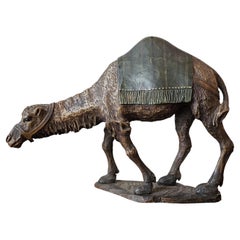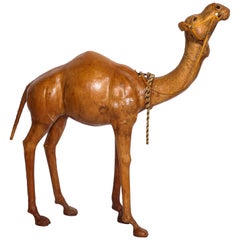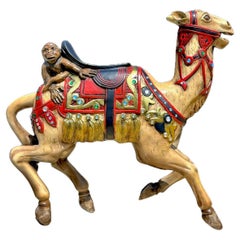Items Similar to Large Neapolitan 19th Century Hardwood Sculpture of a Crèche Camel.
Video Loading
Want more images or videos?
Request additional images or videos from the seller
1 of 22
UnknownLarge Neapolitan 19th Century Hardwood Sculpture of a Crèche Camel.1890s
1890s
$1,717.79
$2,862.9940% Off
£1,269.99
£2,116.6440% Off
€1,440
€2,40040% Off
CA$2,362.80
CA$3,93840% Off
A$2,626.40
A$4,377.3340% Off
CHF 1,376.70
CHF 2,294.5040% Off
MX$32,074.65
MX$53,457.7540% Off
NOK 17,187.31
NOK 28,645.5240% Off
SEK 16,170.05
SEK 26,950.0940% Off
DKK 10,962.70
DKK 18,271.1640% Off
About the Item
Large, Neapolitan, late 19th Century hardwood sculpture of a camel. Artist unknown.
A beautifully patinated hardwood sculpture. The sculpture is extremely charming and having been handled for over a century has a lovely warm and tactile patina. It is particularly nice too see the work of the craftsperson in the adze and chisel marks along the body of the sculpture. The Italians and most notably the area around Naples has a long and storied tradition in the creation of sculptures for Nativity Scenes. This camel is both an endearing item and a piece of social history.
A wonderful addition in its own right to the traditional Christmas scene, by tradition this sculpture was used as a maquette for the production of papier-maché models used in Christmas Creches which have such a long tradition in Italy and throughout the world. Wonderfully carved this piece was used to create hollow models out of papier-maché which were more affordable for this Christmas tradition. Hundreds of strips of papier-maché would be layered onto the figure in all directions. Then using a sharp tool the papier-maché was pushed into all the crevices of the sculpture to give it crisp detail. Once the layers of paper were dry the papier-maché was cut at certain points and lifted off the sculpture. Then finally the resulting body parts were glued back together, painted and patinated ready to be placed in the crèche scene.
In the Christian tradition, a nativity scene (also known as a manger scene, cribor, crèche, or in Italian presepio or presepe, or Bethlehem) is the special exhibition, particularly during the Christmas season, of art objects representing the birth of Jesus.
Other characters from the nativity story, such as shepherds, sheep, and angels may be displayed near the manger, as described in the Gospel of Luke. A donkey and an ox are typically depicted in the scene, and the Magi and their camels, described in the Gospel of Matthew, are also included. Many also include a representation of the Star of Bethlehem. Several cultures add other characters and objects that may or may not be Biblical.
Saint Francis of Assisi is credited with creating the first live nativity scene in 1223 in order to cultivate the worship of Christ. He himself had recently been inspired by his visit to the Holy Land, where he'd been shown Jesus' traditional birthplace. The scene's popularity inspired communities throughout Christian countries to stage similar exhibitions.
- Creation Year:1890s
- Dimensions:Height: 20.08 in (51 cm)Width: 19.3 in (49 cm)Depth: 5.52 in (14 cm)
- Medium:
- Movement & Style:
- Period:
- Condition:Areas of old glue on the saddle. Some cracking commensurate with age.
- Gallery Location:Cotignac, FR
- Reference Number:Seller: GB/Camel1stDibs: LU1430212875072
About the Seller
5.0
Platinum Seller
Premium sellers with a 4.7+ rating and 24-hour response times
Established in 2000
1stDibs seller since 2020
260 sales on 1stDibs
Typical response time: 2 hours
- ShippingRetrieving quote...Shipping from: Cotignac, France
- Return Policy
Authenticity Guarantee
In the unlikely event there’s an issue with an item’s authenticity, contact us within 1 year for a full refund. DetailsMoney-Back Guarantee
If your item is not as described, is damaged in transit, or does not arrive, contact us within 7 days for a full refund. Details24-Hour Cancellation
You have a 24-hour grace period in which to reconsider your purchase, with no questions asked.Vetted Professional Sellers
Our world-class sellers must adhere to strict standards for service and quality, maintaining the integrity of our listings.Price-Match Guarantee
If you find that a seller listed the same item for a lower price elsewhere, we’ll match it.Trusted Global Delivery
Our best-in-class carrier network provides specialized shipping options worldwide, including custom delivery.More From This Seller
View AllCigar Store Indian, Early 20th Century, Carved Wood With Polychrome Decoration
Located in Cotignac, FR
A 20th Century wood carved male figure, a 'Cigar Store Indian' with original polychrome decoration.
A now controversial subject, but none the less charming rendition, of a native North American man originally probably used as an advertising figure. Wonderful quality of carving capturing the stance of the man looking out to the distance, hair flowing to his back and plait to the side, all the details of his costume, his native dress and hairpipe breastplate (suggesting he is possibly a Comanche) and chest ornament, apron, trousers, mocassins, shield and arrows. The original Polychrome decoration has weathered beautifully as has the wood itself to present a sculpture that would adorn any collection or interior.
Because of the general illiteracy of the populace, early store owners used descriptive emblems or figures to advertise their shops' wares. American Indians and tobacco had always been associated because American Indians introduced tobacco to Europeans. As early as the 17th century, European tobacconists used figures of American Indians to advertise their shops.
Because European carvers had never seen a Native American, these early cigar-store "Indians" looked more like Africans with feathered headdresses and other fanciful, exotic features. These carvings were called "Black Boys" or "Virginians" in the trade. Eventually, the European cigar-store figure...
Category
Mid-20th Century American Realist Figurative Sculptures
Materials
Wood, Paint
$3,158 Sale Price
44% Off
Pair of Elephants at Play. Patinated Bronze Sculpture.
Located in Cotignac, FR
2 of 2 patinated bronze animal sculptures of a pair of African elephants at play by Dinah Neill, 2022.
Dinah Neill trained in fine art and graduated with...
Category
21st Century and Contemporary Modern Figurative Sculptures
Materials
Bronze
French Polychrome and Gilded Statue of The Virgin Mary
Located in Cotignac, FR
A polychrome and gilt plaster statue of the Blessed Virgin Mary. The quality of the original gilding and the handling of the folds in the clothing are exceptional.
A wonderful statu...
Category
Late 19th Century Renaissance Figurative Sculptures
Materials
Gold Leaf
Statue Songye, Kneeling Male Figure, Democratic Republic of Congo
Located in Cotignac, FR
A Songye Male Power Figure, Democratic Republic of the Congo, the male figure resting on one knee, with openwork arms and hands resting by the abdomen which contains various charms a...
Category
Mid-20th Century Figurative Sculptures
Materials
Metal
$3,626 Sale Price
20% Off
African zoomorphic puppet head sculpture from the Bozo Tribe in Mali.
Located in Cotignac, FR
Early 20th century zoomorphic African puppet head sculpture from the Bozo tribe in Mali.
This puppet head would have been used by the Bozo ethnic group during the Sogobo ceremony.
This ancestral tradition continues in the region of Segou in Mali along the Niger river. It is an opportunity to regroup the different villages and give rise to musical and theatrical performances whose highlight is the puppet show...
Category
Mid-20th Century Figurative Sculptures
Materials
Metal
Kalao (Great Hornbill) Ibibio Wooden Sculpture, Nigeria.
Located in Cotignac, FR
Mid-Century Ibibio wood carving of a Great Hornbill or (Kalao) from Nigeria. (The carving is shown in the first photo on a bamboo stand which is available if required.)
The Great Ho...
Category
Mid-20th Century Sculptures
Materials
Wood, Paint
You May Also Like
Antique Moroccan Carved Polychrome Painted Wooden Camel Figure Sculpture
Located in Forney, TX
A superbly carved camel statue, early 20th century, Morocco, exceptionally executed, the North African Art Deco Orientalist figural carving features fine...
Category
Early 20th Century Moroccan Art Deco Animal Sculptures
Materials
Wood, Paint
19th Century Italian Carved Wooden Dromedary Camel Sculpture on Oval Base
Located in Atlanta, GA
An Italian carved wooden camel from the 19th century, with oval painted base. Created in Italy during the 19th century, this carved wooden sculpture depicts a dromedary camel...
Category
Antique 19th Century Italian Animal Sculptures
Materials
Wood
Very Unusual French 1940s Model of a Camel, Made of Tanned Leather
Located in New York, NY
A Very Unusual and Rare French 1940s model of a Camel, made of natural tanned leather. This is truly an elaborate piece for any home decor. This piece is made of naturally tanned lea...
Category
Vintage 1940s French Animal Sculptures
Materials
Leather, Glass
Carved Wooden Juvenile Carousel Camel
By Charles Looff Or C.W. Parker
Located in Nantwich, GB
Rare carved wooden carousel camel with a monkey on its back.
In the style of Charles Loof.
Part of a private collection for more than 40 years.
Category
Mid-20th Century Unknown American Craftsman Animal Sculptures
Materials
Wood
CAMEL SCULPTURE WITH AGED LEATHER ON HAND CARVED WOOD BY LiBERTY'S LONDON
By Liberty & Co.
Located in Pulborough, GB
We are delighted to offer for sale This Lovely Liberty's Leather Camel Childrens Toys.
Please carefully examine the pictures to see the condition before purchasing, as they form pa...
Category
20th Century European Animal Sculptures
Materials
Leather
Liberty's London Camel Sculpture with Lovely Aged Leather on Hand Carved Wood
Located in Pulborough, GB
We are excited to present this camel sculpture with lovely aged leather on hand-carved wood.
It has been made for Liberty's in London.
This full-grown and very realistic dromedary or camel has both great aesthetic and decretive value.
They have been made for the kids of the wealthy people that shopped by Liberty's.
Underneath the leather, the hide is a very well-carved wooden sculpture which is why the sizeable camel has such realistic features.
It is a very realistic sculpture and a good size, it also has the original leather which makes it even rarer.
We feel that the maker of this work of animal art has beautifully captured the look and soul of this majestic desert animal...
Category
20th Century British Animal Sculptures
Materials
Leather
More Ways To Browse
Camel Art
19th Century Artist Model
Antique Saints Sculptures
Wood Camel
Wood Angel Sculpture
Sheep Sculpture
Antique Neapolitan
Antique Jesus Sculpture
Jesus Wood Sculpture
Papier Mache Sculpture
Camel Sculpture
Paper Mache Sculptures
Jesus Christ Sculpture
Donkey Sculpture
Antique Long Handled Tools
Camel Figure
Carved Wood Camel
Nativity Scene
